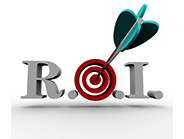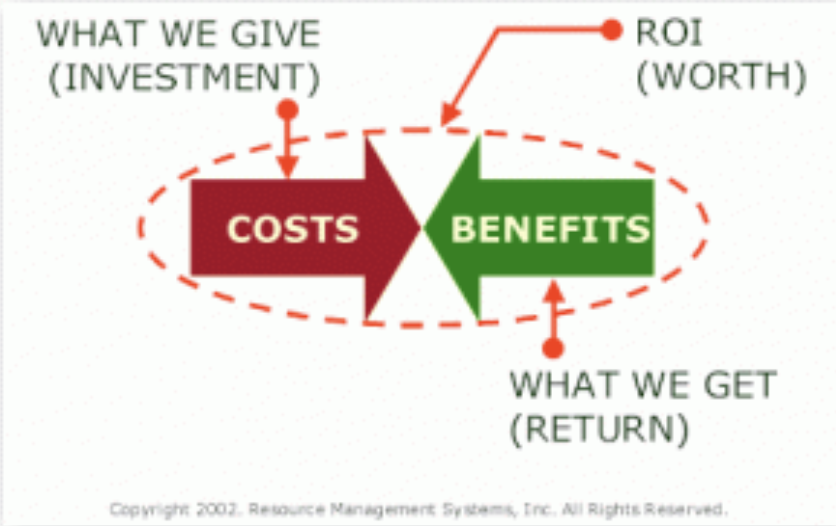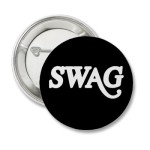How to Calculate ROI For Your Programs
Whether you work for a small winery or a large international beverage company, there are certain things that are common among all of us:
- Direct Sales Are Hard. We all realize the value of direct sales but are vexed at the piecemeal nature of DTC programs in comparison to the volume we can move through distribution.
- Making Money is Hard. We all work hard on our wine quality, and Cost of Goods (COG) is constantly reminding us how complicated our product is, and how slim our margins are.
- We Work Hard. If the 608 iPad and 1738 iPhone wine apps in the Apple App store are any indication, we are all creative and adventurous, and willing to try new things to sell wine, promote our brand, and engage customers.
The overall concept is you don’t just take your sales minus your costs, and if you are positive, you’re good. You look at the net gain, the gain over your effort, and see if your sales were better than doing nothing.
I know this sounds like a lot of math, but the trick is to pay attention equally to costs, and sales.
Pay too much attention to sales, and you may be making some big blunders. Pay too much attention to costs, and you may be making some big blunders.
Estimating Costs
Let’s look at a Wine Club event that looks great from the outside.
You looked at your vendors and charged enough for ticket prices to cover your catering cost, and closed the event with $10,000 in sales.
A success, yes?
But what did that event really cost you? What about the wine you poured? And, the staff you paid overtime? Did you close the tasting room early?
Also, did you really make $10,000? Net (actual) or gross (before discounts)? What about the winemaking costs that went into each bottle? The discounts you gave to the party attendees? Shipping discounts?
Estimating Returns
You can also pay too close attention to the costs, or ROI on each order, rather than the sales of the program at large.
I recently heard of such a case. A winery launched its first campaign with a popular outbound firm and was advised shipping discounts were being received well at the moment, giving them the approval to subsidize shipping when necessary to make a sale.
The winery was furious at the result.
In this case, the winery focused on the costs. They looked at each individual sale and saw they lost $3.99 to $146.13 per order for shipping, for a total loss of $700 in shipping costs. Add that loss on top of the 26% paid to the outbound company, the conclusion was the program wasn’t successful. You might agree with him, after all, $146.13 is a lot to lose on an order.
But the winery made $15,000 in wine sales.

But how do you know if you efforts are paying off?
These days when customers have more choices between brands, channels, and prices, it is all the more important to track, benchmark, and evaluate your programs. What may seem like a hassle as you finish one program and move on to the next, taking time for a little analysis will save you a lot of work over time, and keep you on track. Here are some tips to help you.

ROI (Return on Investment) Can Help You Determine If Your Effort Is Worth It
The formula for ROI is:SALES COSTS / COSTS

In our fictitious event, our math works out like this:
| COSTS | |
| Catering covered by tickets: | $0 |
| Wine poured (20 bottles at $10 a bottle COG): | $200 |
| Staff overtime: | $800 |
| Loss of revenue to close tasting room: | $3,000 |
| Wine sold COG: | $2,000 |
| Total | $6,000 |
ROI is therefore $8000-$6000=$2000/$6000=30%
So, you spent $6000 to gain $2000. You covered your costs, but next time leave the tasting room open.
I submit the program was a success, and here is why:
| Net sales after club discount | $15,000 |
| Cost to outbound company was 26% | $3,900 |
| Shipping subsidized | $700 |
| Assuming COG (avg. cost per bottle x # of bottles) is | $2,250 |
| Total cost is | $6,850 |
ROI=$15,000-$6,850=$8,150/$6,850=118%
I’d spend $6,850 to make $8,150 any day of the week.
In both cases, now you have benchmarks. Now, the opportunity is to decrease the $ spent and increase the $ gained on the next program. And, math isn’t everything; there are secondary benefits, too. Like in our event example the goodwill generated toward your Club customers.

So, don’t focus on the leaves, look at the forest and you will always be ahead, and always improve.
What if you don’t have these numbers?
What if you’re not sure what your costs are? Just remember this:

Some call it a “Silly Wild-Ass Guess”.
When I presented them, I always thought of it as “I Speak, And you Will All Giggle.”
The point is – estimate it.
Saying you can’t calculate ROI because you can’t get it down to the final pennies is missing the point. What is important is that you’re aware, directionally, of what your costs and returns are.
For example, if you don’t know your COGs, assume if you sell DTC full-price you’re getting about 85% (average margin for full MSRP versus FOB, or trade, which is 50%). So, if you’re Wine Club is a 20% discount then your margin is still 65%. Then don’t worry about each order, just SWAG your formula for a Wine Club event to be:
ROI=SALES X 65% – PROGRAM COSTS / PROGRAM COSTS
If you SWAG your costs and keep track of your net sales after taxes and shipping, you should get a good directional analysis of how the program did.
And, if you have some poor-performing programs, good for you! It means you’re being creative. But at least you’re tracking them and learning from them.
“I never make stupid mistakes. Only very, very clever ones.”
~ John Peel
p.s If this sounds interesting but tedious, ROI analyses are relatively easy to outsource periodically to a consultant, you know, like me, for quarterly program reviews for you. Let’s talk.


